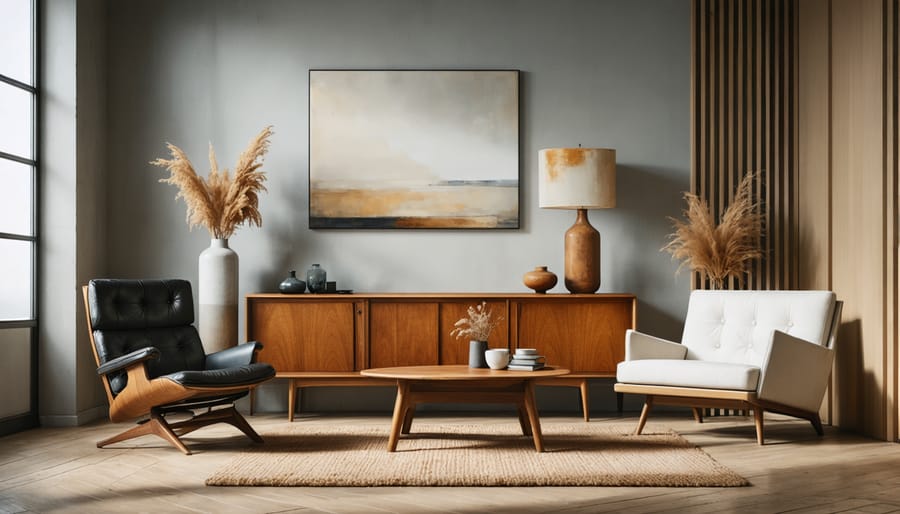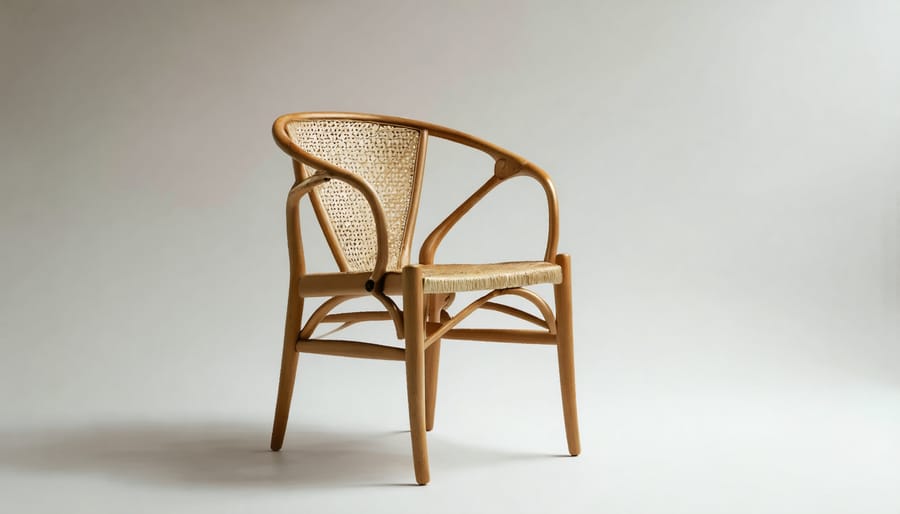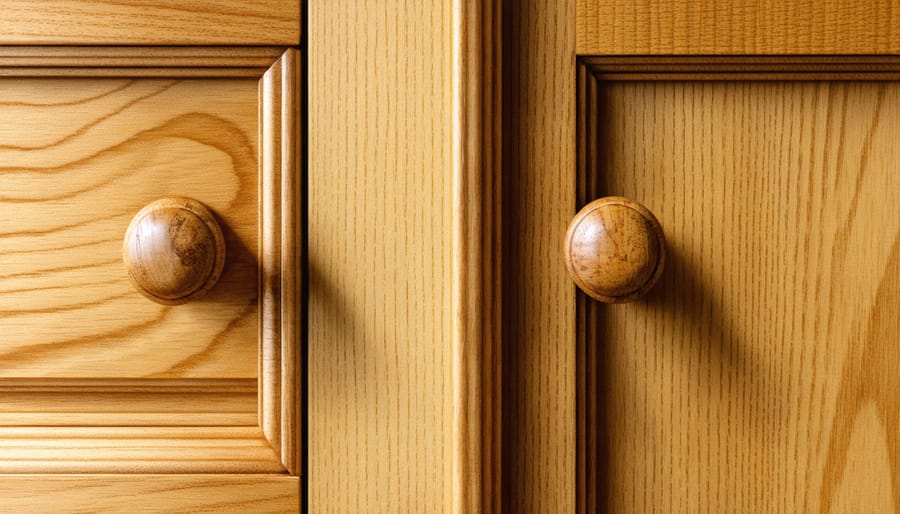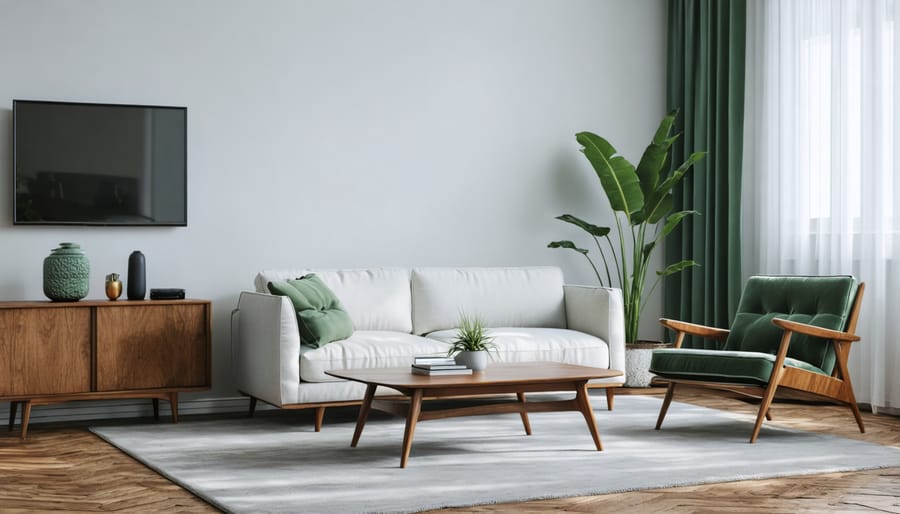
Danish furniture design stands as a testament to the perfect marriage of form and function, revolutionizing modern interior aesthetics since the mid-20th century. Masters like Hans Wegner, Arne Jacobsen, and Finn Juhl transformed simple materials into enduring works of art, creating pieces that remain highly coveted decades after their inception. Their philosophy of combining clean lines, organic shapes, and superior craftsmanship with sustainable materials like teak and oak has influenced furniture design worldwide.
What sets Danish furniture apart is its unwavering commitment to human-centered design principles. Each piece, whether it’s a sculptural dining chair or a minimalist credenza, reflects the Danish concept of “hygge” – creating comfort and contentment through thoughtful design. The movement’s emphasis on quality materials, expert joinery, and ergonomic considerations ensures that these pieces not only look stunning but also serve their intended purpose with exceptional durability.
Today, vintage Danish furniture pieces command premium prices at auctions, while contemporary designers continue to build upon this rich heritage. The timeless appeal of Danish design lies in its ability to enhance any interior space while maintaining its functionality – a perfect embodiment of the principle that beautiful things should also be useful.
Danish furniture design was revolutionized by several mid-century modern furniture pioneers whose innovative work continues to influence contemporary design. Arne Jacobsen, perhaps best known for his Egg Chair and Swan Chair, masterfully combined functionality with organic forms. His pieces exemplify the perfect balance between comfort and aesthetic appeal, making them highly sought after by collectors and design enthusiasts alike.
Hans Wegner, often called the “Master of the Chair,” created over 500 chair designs during his career. His most celebrated piece, the Wishbone Chair (1949), showcases the streamlined elegance and superior craftsmanship that became hallmarks of Danish design. Wegner’s attention to ergonomics and his deep understanding of wood as a material set new standards for furniture manufacturing.
Finn Juhl brought an artistic sensibility to furniture design, creating pieces that pushed the boundaries of traditional construction methods. His Chieftain Chair (1949) demonstrates his bold approach to form and his ability to combine sculptural elements with practical functionality. Juhl’s work was instrumental in introducing Danish modern furniture to the international market, particularly in the United States.
These designers’ commitment to quality materials, expert craftsmanship, and timeless aesthetics has made their pieces highly valuable and worthy of preservation. Their innovations in joinery techniques and material manipulation continue to influence furniture restoration practices today, making their work particularly relevant for those interested in maintaining and preserving classic Danish furniture.

Danish furniture design exemplifies the highest standards of material selection and craftsmanship, with wood being the cornerstone of this celebrated tradition. The thoughtful approach to natural materials in furniture design begins with carefully selected hardwoods, predominantly teak, oak, and rosewood, chosen for their durability and aesthetic appeal.
Master craftsmen prioritize wood grain patterns and color consistency, often hand-selecting each piece to ensure optimal visual harmony in the final product. The wood is typically air-dried for extended periods, sometimes up to several years, to achieve the perfect moisture content and stability required for lasting furniture pieces.
What truly sets Danish furniture apart is its joinery techniques. Mortise and tenon joints, dovetailing, and finger joints are executed with remarkable precision, often without the use of metal fasteners. This traditional approach not only demonstrates superior craftsmanship but also ensures furniture pieces can withstand decades of use while maintaining their structural integrity.
Quality standards in Danish furniture making are notably stringent. Each piece undergoes multiple inspections throughout the production process, with special attention paid to smooth transitions between components, precise angles, and immaculate surface finishing. The result is furniture that not only looks beautiful but also maintains its functionality and appearance for generations, making it both an investment and an heirloom.

Danish furniture design exemplifies the perfect marriage of form and function, building upon centuries-old minimalist furniture traditions. The hallmark of this design philosophy lies in its clean, uncluttered lines that create a sense of visual harmony while serving practical purposes. Every curve, angle, and joint is thoughtfully considered to enhance both aesthetics and functionality.
Danish designers prioritize ergonomic excellence, crafting pieces that naturally complement human movement and posture. Chairs feature carefully calculated seat heights and back angles, while tables and storage units maintain proportions that maximize utility without overwhelming spaces. This attention to human-centered design ensures comfort without sacrificing style.
The practical elements of Danish furniture design extend beyond mere functionality. Pieces often incorporate clever storage solutions, modular components, and adaptable features that suit modern living spaces. The use of natural materials, particularly teak, oak, and rosewood, not only adds to the visual appeal but also ensures durability and longevity.
What sets Danish design apart is its ability to achieve sophistication through simplicity. Unnecessary ornamentation is stripped away, leaving only essential elements that serve both practical and aesthetic purposes. This approach creates furniture that remains timeless, adapting seamlessly to changing interior design trends while maintaining its core functionality and beauty.

When restoring Danish furniture, always start with a gentle cleaning using a mild soap solution and soft cloth to remove surface dirt. For teak and rosewood pieces, apply teak oil sparingly with a lint-free cloth, following the wood grain to nourish and protect the timber. Never use harsh chemicals or abrasive materials that could damage the original finish.
Pay special attention to joints and hardware. Danish furniture often features precision joinery that may loosen over time. If repairs are needed, use period-appropriate techniques and materials. For upholstered pieces, document the original fabric placement before removal and consider working with specialists who understand mid-century materials.
Original finishes should be preserved whenever possible. If refinishing is necessary, opt for traditional oil finishes rather than modern polyurethanes to maintain authenticity. Keep furniture away from direct sunlight and maintain consistent humidity levels to prevent wood movement and damage.
For hardware restoration, clean brass or steel components carefully and consider having them professionally replated only if severely damaged. Remember that some patina adds character and value to vintage Danish pieces.
Danish furniture design continues to captivate homeowners and designers worldwide with its timeless appeal and exceptional craftsmanship. The perfect blend of functionality, simplicity, and artistic vision has ensured these pieces remain highly sought-after, both as vintage collectibles and contemporary reproductions. The investment value, combined with the enduring aesthetic and practical benefits, makes Danish furniture a wise choice for those seeking quality, style, and longevity in their interior spaces.